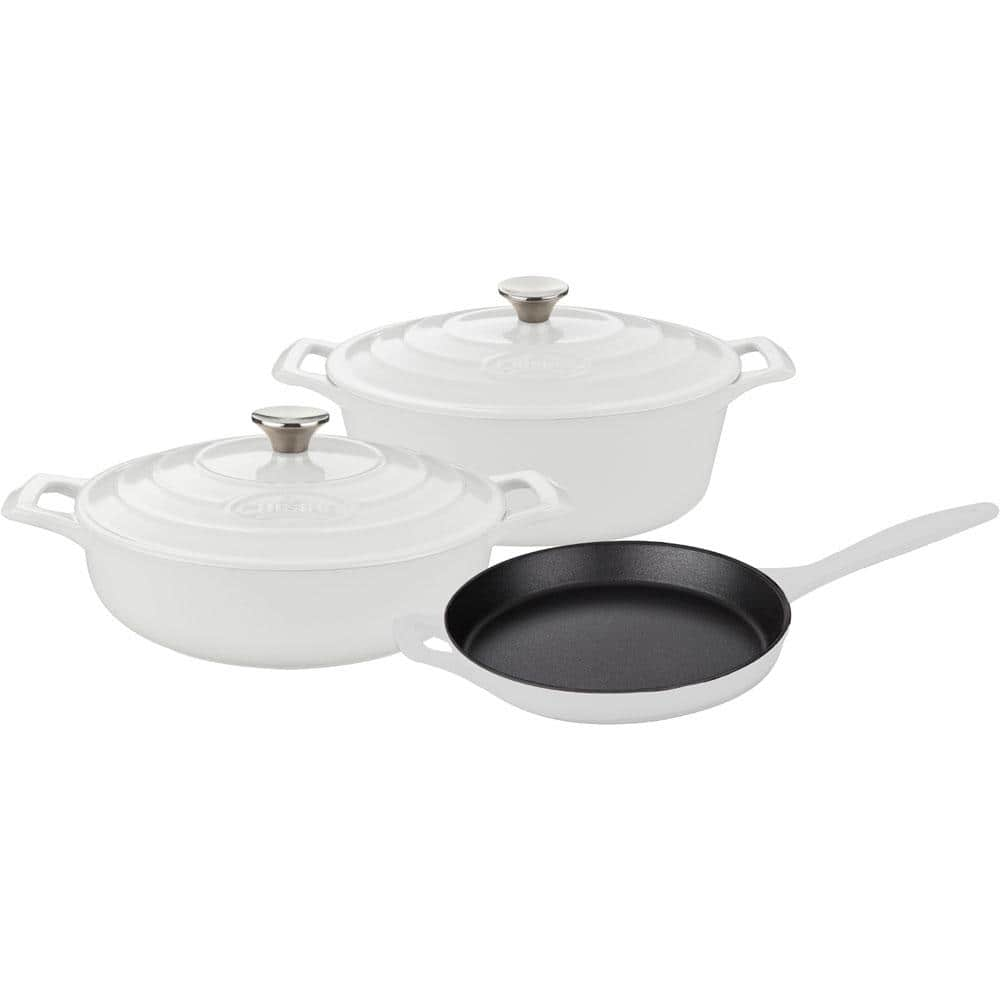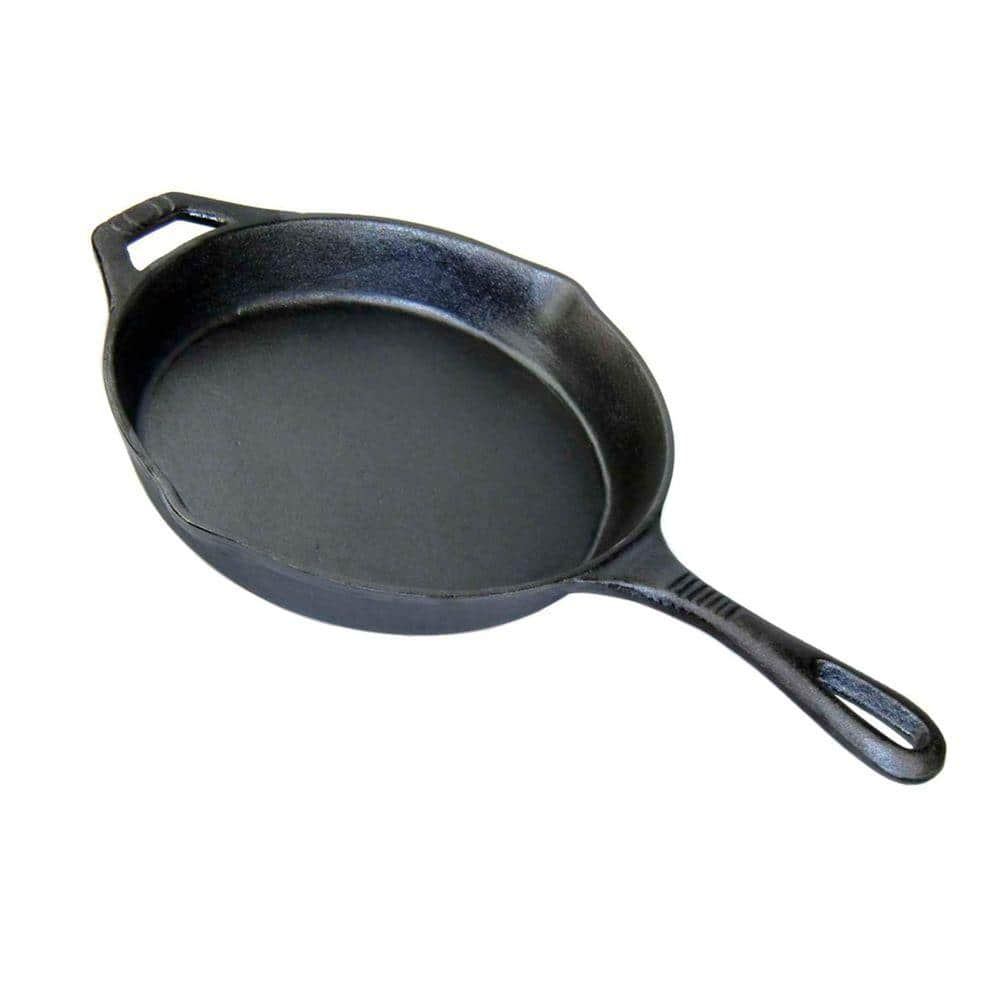The Best Roasting Pans for Cooking and Broiling

Last updated September 7, 2023
The best roasting pans take you beyond holiday gatherings. They’ll serve you well as you roast weekday veggies, incorporate a Sunday roasted chicken into your repertoire or head to the barbecue with a slew of meats to smoke.
Investing in a top-tier roasting pan is worthwhile. It is important to understand just what you’re looking for. Multiple factors are at play with this ingenious piece of cookware. This guide will cover the best roasting pans for cooking and broiling.
Table of Contents
What Makes a Roasting Pan?
How to Use a Roasting Pan
Roasting Pans & Water Baths
Roasting Pan Size
Roasting Pan Shape
Roasting Pan Materials
What Makes a Roasting Pan?
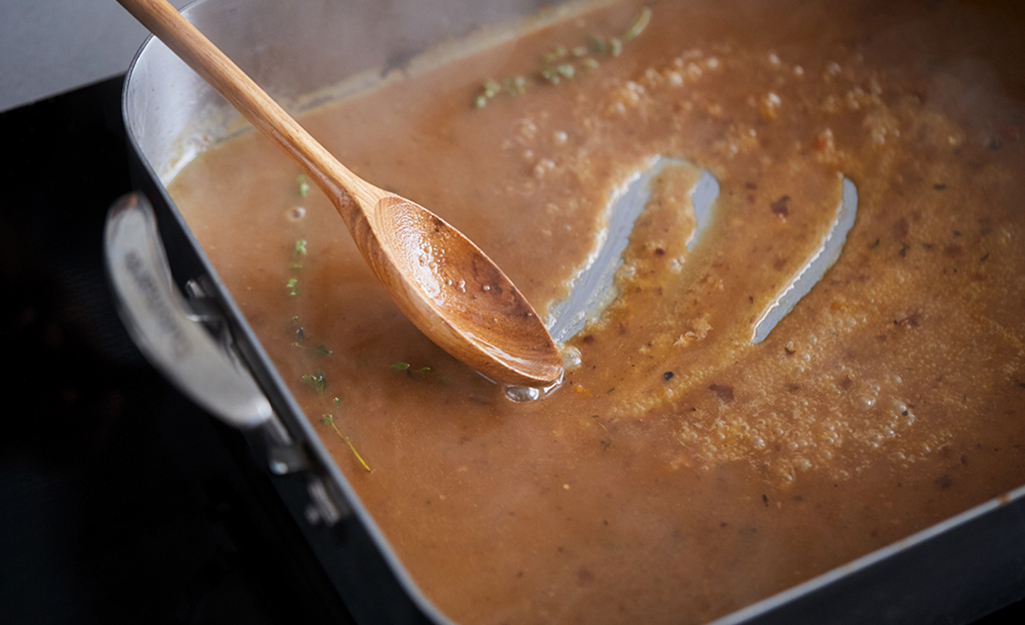
To qualify as exceptional, a roasting pan needs to be sturdy. It needs to distribute heat well and have an optimal size and shape. It should also possess features that make it easy to handle. It needs to be able to transfer from the oven to the stovetop for a post-roast deglazing. No hot spots or buckling allowed.
One of the principal roasting pan uses is to roast a large cut of meat. You start in the oven, then move to the stovetop. Then, stirring with a cooking utensil, like a whisk or wooden spoon you can develop a gravy or sauce using the browned fat and juices from the meat. These drippings, or “sucs,” as they’re known in the French cooking vernacular, are the base for the sauce you’ll develop to accompany your roast. The best roasting pan for chicken, for example, allows you to move seamlessly between these two stages. The best roasting pan for vegetables can, in fact, be this same pan. That’s why it’s essential you select a first-rate product.
How to Use a Roasting Pan
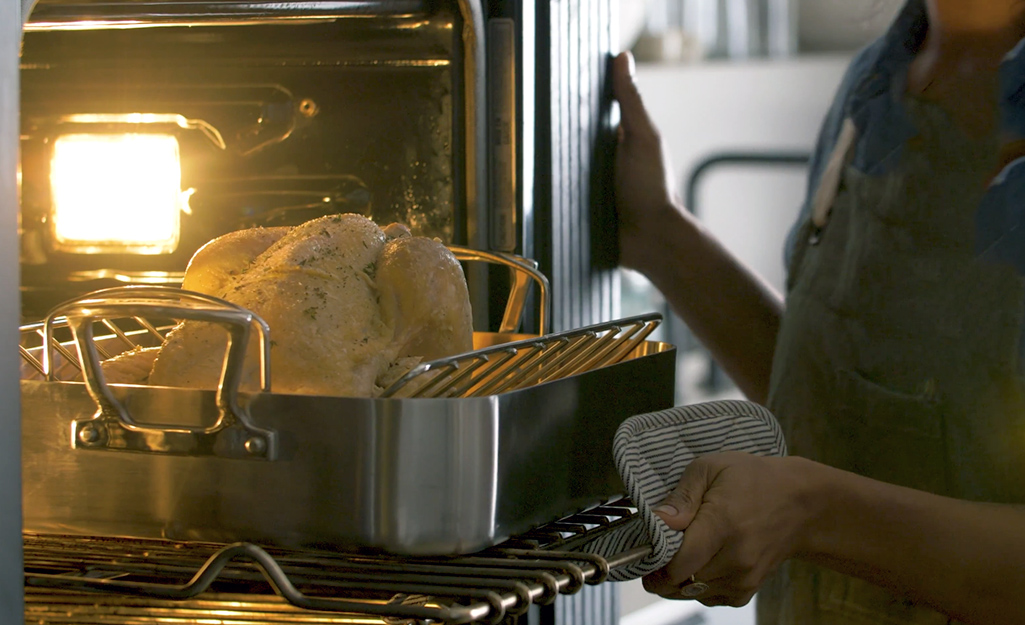
When you know how to use a roasting pan, your options are pretty limitless. The best roasting pan for turkey and the best roasting pan for vegetables will make use of the same science to create dishes with an amazing texture and maximum punch.
A roasting pan helps coax incredible flavor out of a piece of meat or collection of vegetables by exposing them to high heat in an environment that is built for optimal airflow. The pan will allow you to brown food while keeping it moist and will then work wonders finishing on a stove top. A roasting pan should be self-contained thanks to the right rack, handles and surface materials. It really shouldn’t demand extra work on the cook’s part. You shouldn’t need to layer cooking aids unless you’re working with a water bath.
Roasting Pans & Water Baths
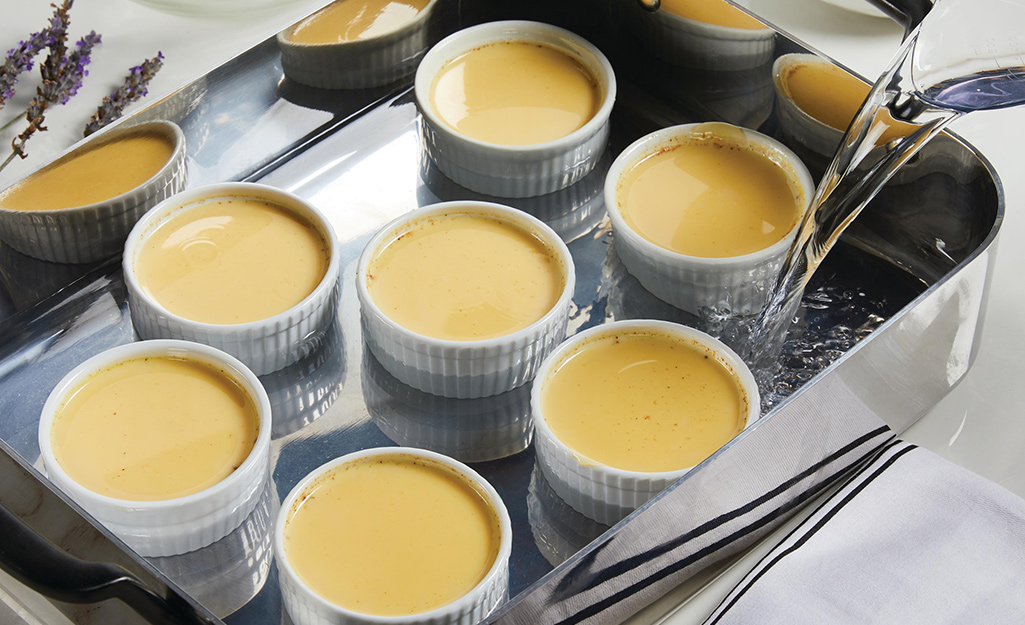
In truth, you should not be putting water into your roasting pan at every use. It will inhibit browning and can lead to steaming. However, there are two times at which you definitely want to pour a bit in.
You should use a small amount of water with lean cuts like beef chuck, beef round or pork loin roast. Water is added to the pan to prevent the juices, which will be less ample than those coming from fattier cuts, from burning and to help encourage development of a jus. But you do not want to steam your meat, so don’t add too much water. Some folks will tell you that when cooking roast beef, you ought to add a bit of water to produce the tenderest outcome possible. Nevertheless, you should only add water when it’s needed, like when drippings are browning. Tucking vegetables into your roasting pan will not only contribute to flavor, but will also increase moisture levels, offsetting the need for additional water.
The other time you’ll use water in your roasting pan is to fashion a hot water bath. These are used to bake delicate custards like cheesecake and creme brulee. A roasting pan’s high walls and sturdy handles make it an ideal vessel for a hot water bath.
Roasting Pan Size
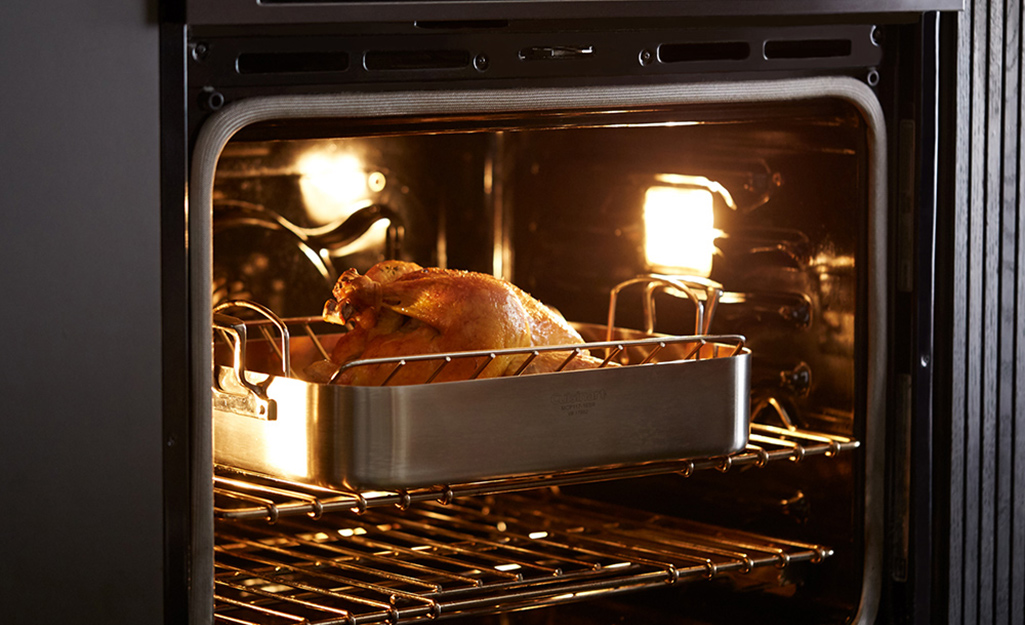
The first and most obvious factor to consider is size. You want a roasting pan that will be large enough to accommodate a big piece of meat, like turkey, prime rib, brisket or pork loin without touching the sides, so that air can adequately circulate.
Recipes that include the use of a roasting pan also often direct you to stick some hearty vegetables into the pan’s base to mingle with the protein’s juices. Vegetables add moisture and flavor while contributing to a completed dish. This means you want a generously sized pan.
That said, if a pan is too big and too much of the bottom is left unoccupied, you can inadvertently burn the juices that get released in the cooking process. Keeping a few roasting pans in different sizes is recommended, one pan for large groups and one for smaller weeknight meals. If your storage space allows it, you could even have one pan small enough for low-lift toaster oven use.
The height of a pan’s walls is also important to consider. When roasting, a baking sheet just isn’t going to cut it. A shallow roasting pan, with a depth of 1- to 2-inches works well for your vegetables and lean meats. Anything that is going to generate a lot of juice or benefit from basting needs higher walls.
With walls that are too low, you risk splashes and spills, particularly when braising or if you’re using a water bath. A roasting pan meant to handle turkey should have a depth of 3- to 4- inches. If walls are too high, though, you’ll have trouble accessing the pan’s contents to repositioning of meat or veg that you’ll need to do mid-roast.
Here’s the standard breakdown of roasting pan sizes and suggestions for what to put in them:
- Small: 14 x 10 x 3 inches. Good for vegetable sides and small cuts of meat under 12 pounds.
- Medium: 16 x 12 x 3 inches. Good for more substantial birds, weighing 12 to 16 pounds.
- Large: 18 x 13 x 4 inches. This is for that crowd you’re feeding. It is the best roasting pan for turkeys that weigh anywhere from 16 to 25 pounds, racks of rib and giant brisket cuts.
Roasting Pan Shape
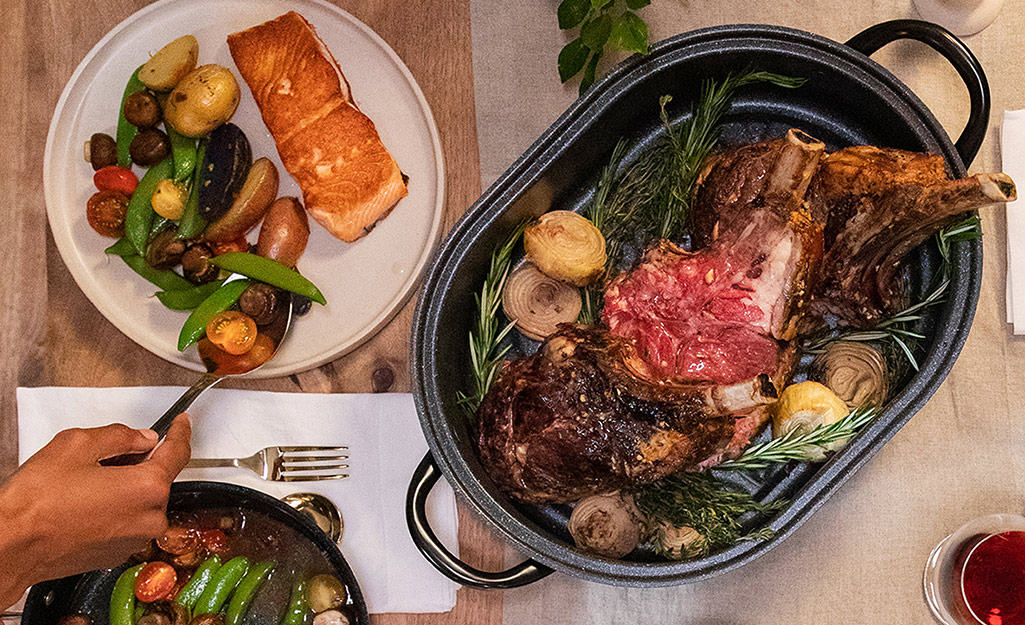
Roasting pans come in oval and rectangular shapes. The lack of corners on an oval roasting pan makes whisking gravy and sauces a cinch. Oval pans work best with similarly shaped roasts like ham, chicken, turkey and prime rib. The curved corners also make for easier cleaning.
Opting for an oval pan, however, will mean you lose out on surface area. For this reason, you will come across rectangular roasting pans more often than oval. Want the best of both worlds? The best roasting pans out there are available in rectangular shapes with rounded corners.
As you shop, know that many roasting pans do not have a flat bottom. If you find a model that does have one, you should get it. A flat base works well on the flat glass stove tops and induction ranges that seem to be more and more commonplace in kitchens.
Roasting Pan Materials

Roasting pans are available in many different materials. Far and away, tri-ply is the industry gold standard. Other reliable materials used to make roasting pans include aluminum, stainless steel, enameled carbon steel, nonstick, cast iron and copper.
Generally, you do not need to worry about a pan lacking sufficient heat-resistance. The material must be safe for temperatures of up to 500 degrees Fahrenheit or higher, though. Roasting pans
that can withstand 650 degrees Fahrenheit are recommended.
Choosing a strong material means your roasting pan will look nice. For example,
sparkling stainless steel can’t be beat.
The material it’s made of impacts the roasting pan’s weight, which is an important factor. Given the heft of most things you will be putting in the pan, you do not want to select something that is too heavy prior to loading it up. But you certainly should not reach for anything too light. You need a pan with a gauge, which indicates the metal’s thickness that will stand up to high heat and not warp or pop out of shape.
Here are the options:
Tri-ply
Tri-ply pans (also known as multi-ply), are made of aluminum sandwiched between two layers of stainless steel. This material is your best bet. The aluminum, which conducts with extreme efficiency, will spread heat evenly, while the steel, which is not as masterful a conductor, is nonreactive and is an ideal substance on which to develop a sauce.
Copper
Copper is the most impressive conductor. It heats evenly and swiftly and is top of the class for the transition to stovetop. It is, however, very expensive. Maintaining its sheen can be demanding. Also, copper pants don’t work with induction, since induction cooktops work using the power of magnetism. This is also a drawback of aluminum. To resolve this issue, you can grab yourself a conversion disk. There are also a number of copper and aluminum pans out there that boast stainless steel bottoms to combat this shortcoming.
Stainless Steel
Plain stainless-steel roasting pans are common because they are easy to clean, lightweight, durable under high heat and have a covetable luster. However, they distribute heat unevenly and can produce scorched and burnt food.
Steel with an enamel coating is a good bet for heat conduction and is also an option for those trying to avoid breaking the bank. But the lower price point comes at a cost. Enamel chips quite easily, meaning that this material will not get you a pan that lasts a lifetime.
Aluminum
Aluminum, though ideal for conduction within a tri-ply configuration, is not a wise choice on its own because it will react to anything acidic. Adding lemon, vinegar, tomatoes or anything of this sort to an aluminum pan will stain the metal, which will in turn impart a cloying flavor onto your food.
Anodized aluminum, on the other hand, does not tend to leach as untreated aluminum does. But its dark color makes tracking the development of browning on a pan’s base more difficult.
Cast Iron
Cast iron is also not ideal for roasting pans. Its considerable weight makes periodic turning and lifting of the pan a nightmare. Cast iron is not the most even heat conductor. While cast iron will form its own nonstick coating if you treat it right, the material requires maintenance. An enameled cast iron pan will serve you better in the conductivity department, and the coating helps it transition from oven to stove seamlessly. However, you are still left with the issues of weight and chipping.
Glass
A general rule of thumb is to steer clear of glass roasting pans. They are not safe on a hot burner. They’re heavy and are prone to chipping and cracking.
Nonstick
You should also avoid nonstick and Teflon roasting pans. They are high maintenance, have a short lifespan and make deglazing impossible. Nonstick pans aren’t broiler safe. You should never put something with a nonstick coating in an environment over 400 degrees Fahrenheit.
Roasting Pan Handles
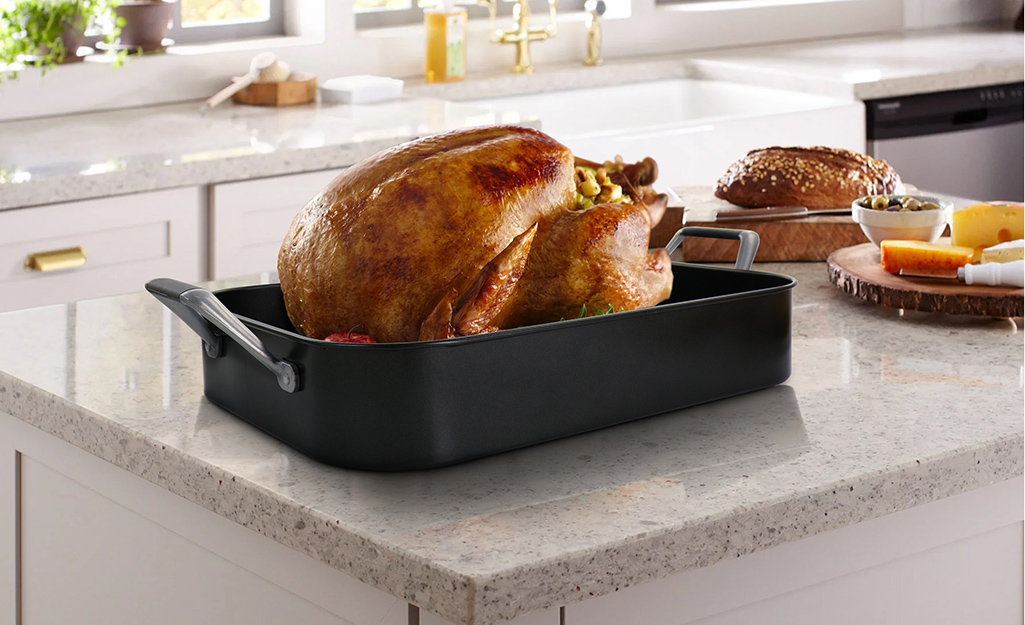
Once you’ve identified a material for your best roasting pan, you need to consider handles. Bale handles, rectangular wire ones that slide up and down, are ideal for storage because they do not add any extra length. They can, on the other hand, be a bit flimsy and unstable. Instead, look for large loop handles. They’re fixed in place, are wide enough to accommodate a comfortable grip, even with oven mitts, and are ideally situated to stand straight up, minimizing additional width.
Roasting Pan Racks
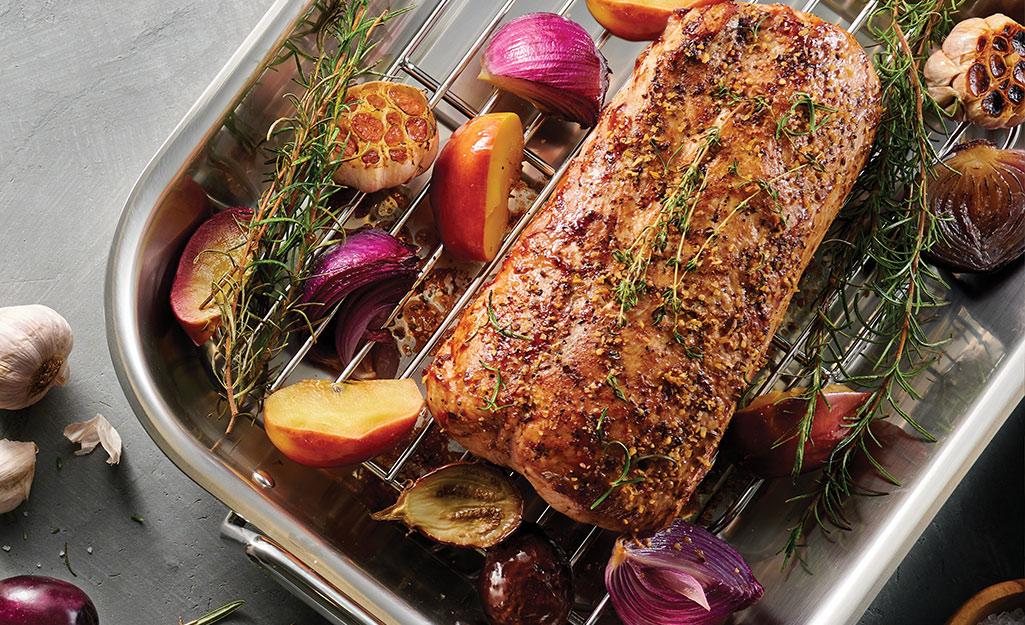
A very important element of your roasting apparatus is its rack. A roasting rack enables air circulation around a piece of meat and staves off sogginess while juices develop. A rack is necessary to avoid saggy chicken skin and improperly browned chuck. A good roasting rack is also essential to creating the drippings-based jus you’ll use to make gravies or sauces.
Most roasting pans will come with a rack. Only the best roasting pans come with high-quality, reusable ones. Such a selection will be your best roasting pan for chicken or turkey, the body of which needs help sitting comfortably in a flat pan.
This should be a top priority. Having a good rack that can stand up to frequent use will increase the chances that you make the roasting pan a regular part of your cooking lineup. A good rack will also be easier to clean, an important factor when it comes to a tool whose purpose is to help collect tacky fat. Look for an elevated rack either in a U or V shape. This will sit securely in the pan and is ideal for air circulation, even when bearing the weight of a large piece of meat.
Electric Roasting Pans
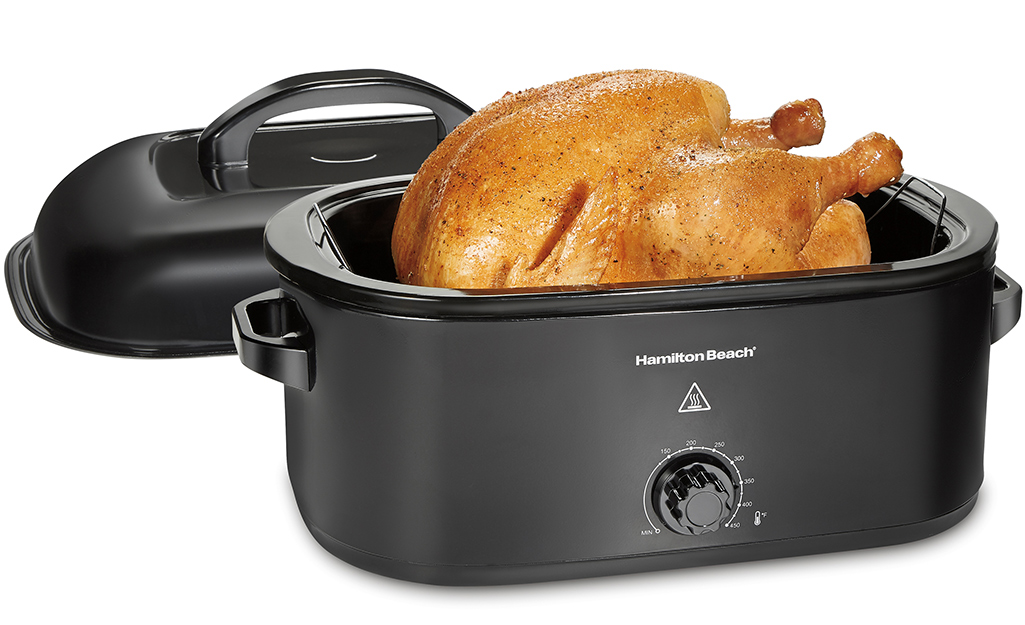
Despite the winning qualities of the classic roasting pans, the right pan for you might actually be an electric roaster oven. Here’s why:
- It acts as a second oven, which can be extremely useful around the holidays or if you’re just stuck with a small oven in your kitchen.
- The best electric roasting pans can also double as chafing dishes if you’re serving at a party. Though sized in a variety of ways, these pans can often handle up to 18 quarts if you select a large-volume model.
- The best electric roasting pans offer convenience. They allow you to leave that full-sized oven unheated and they can tackle tasks that aren’t just roasting, like quickly heating of snacks and side dishes, for example.
- Electric roasting pans function as self-contained units. They can be left to do their thing without too much babysitting thanks to settings and timers.
- Because electric roasters are smaller than traditional ovens, they do not require the lengthy pre-heating that traditional ovens demand. This means your total cook-time is decreased, as is the amount of energy expended.
- Electric roasters are less drying than conventional ovens and less frequently present the flaw of heat spots.
The obvious downside of an electric roasting pan is its size. To accommodate a sizeable bird, your electric roasting pan should have a 16- to 22-ounce capacity. An electric roasting pan can take up a considerable chunk of kitchen real estate, so it’s not for everyone. But if you’re of the ranks that will get regular use out of an electric roasting pan, then it makes a great addition to a kitchen. An electric roasting pan can even be an alternative to the traditional roasting pan if it’s compatible with your cooking style.
Having the best roasting pans can help you in the kitchen. You can cook more flavorful dishes, as well as larger cuts of meat and whole turkeys and chickens. Choose the roasting pan size and material depending on what you plan to cook. Remember the importance of a roasting pan rack, which can help food brown properly.
Ready to get the best roasting pans for cooking and broiling? The Home Depot delivers online orders when and where you need them.





